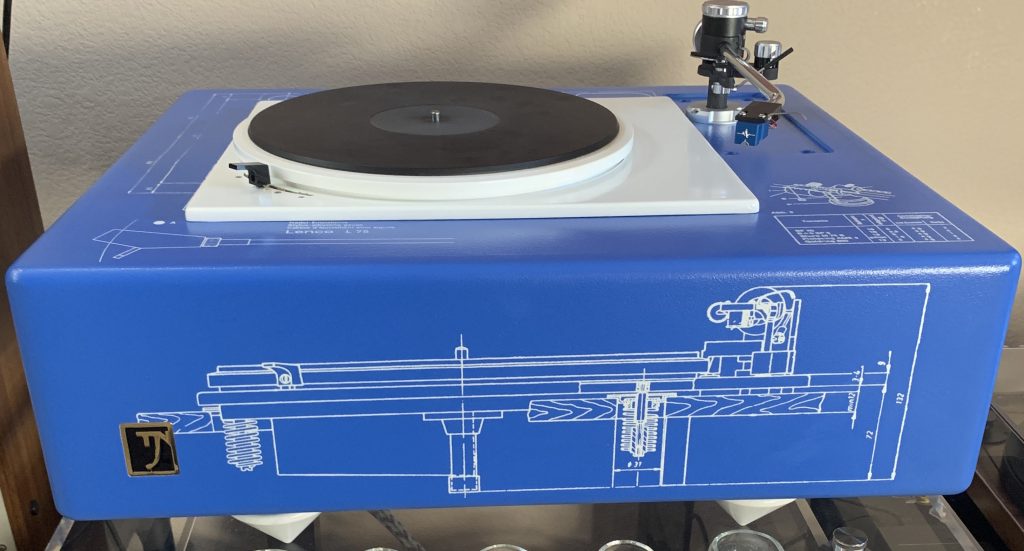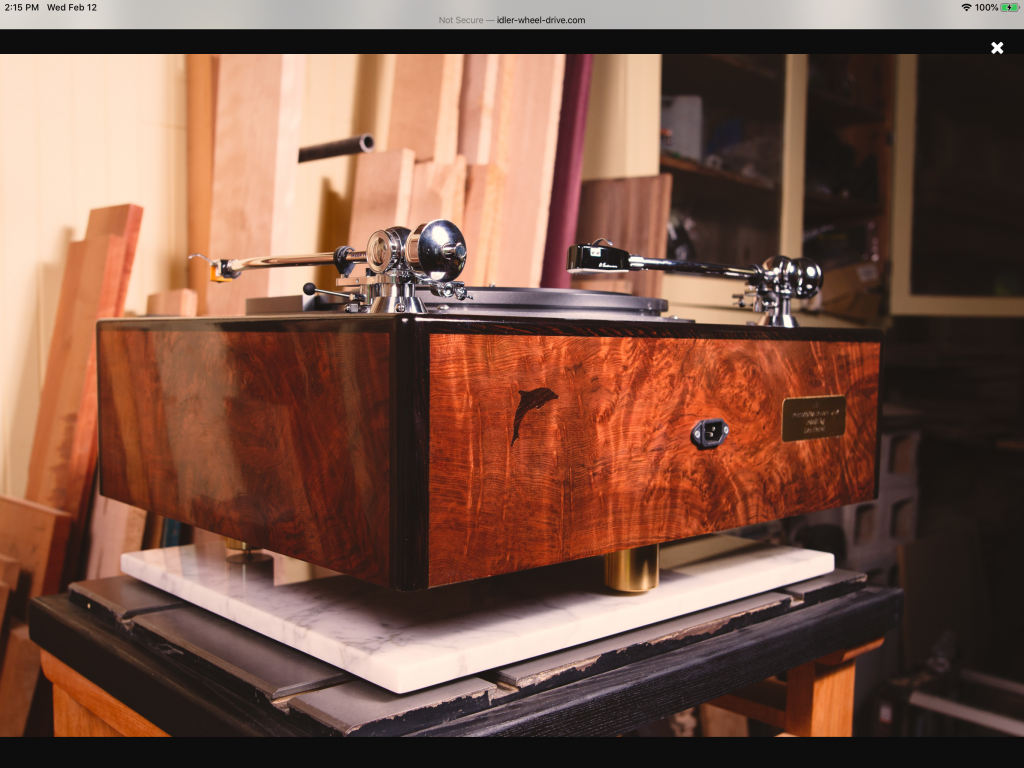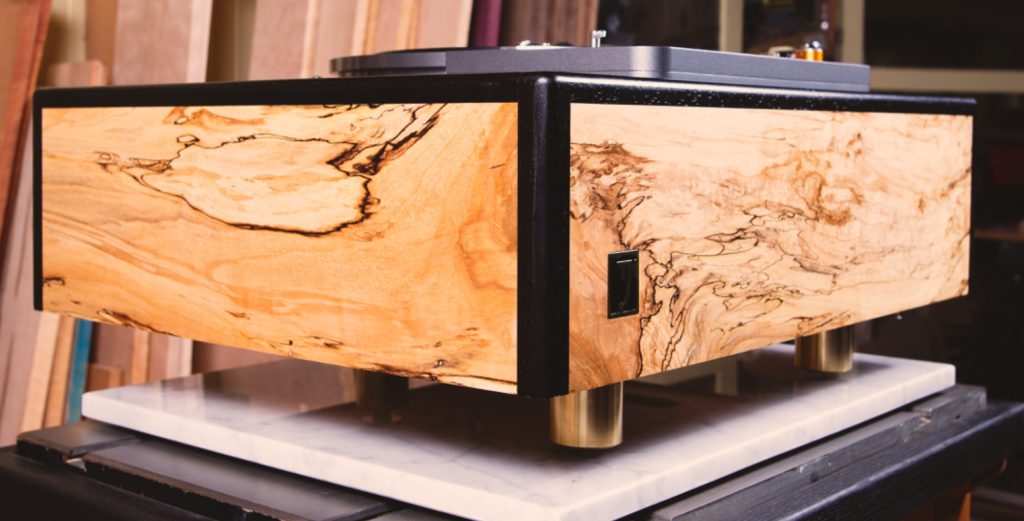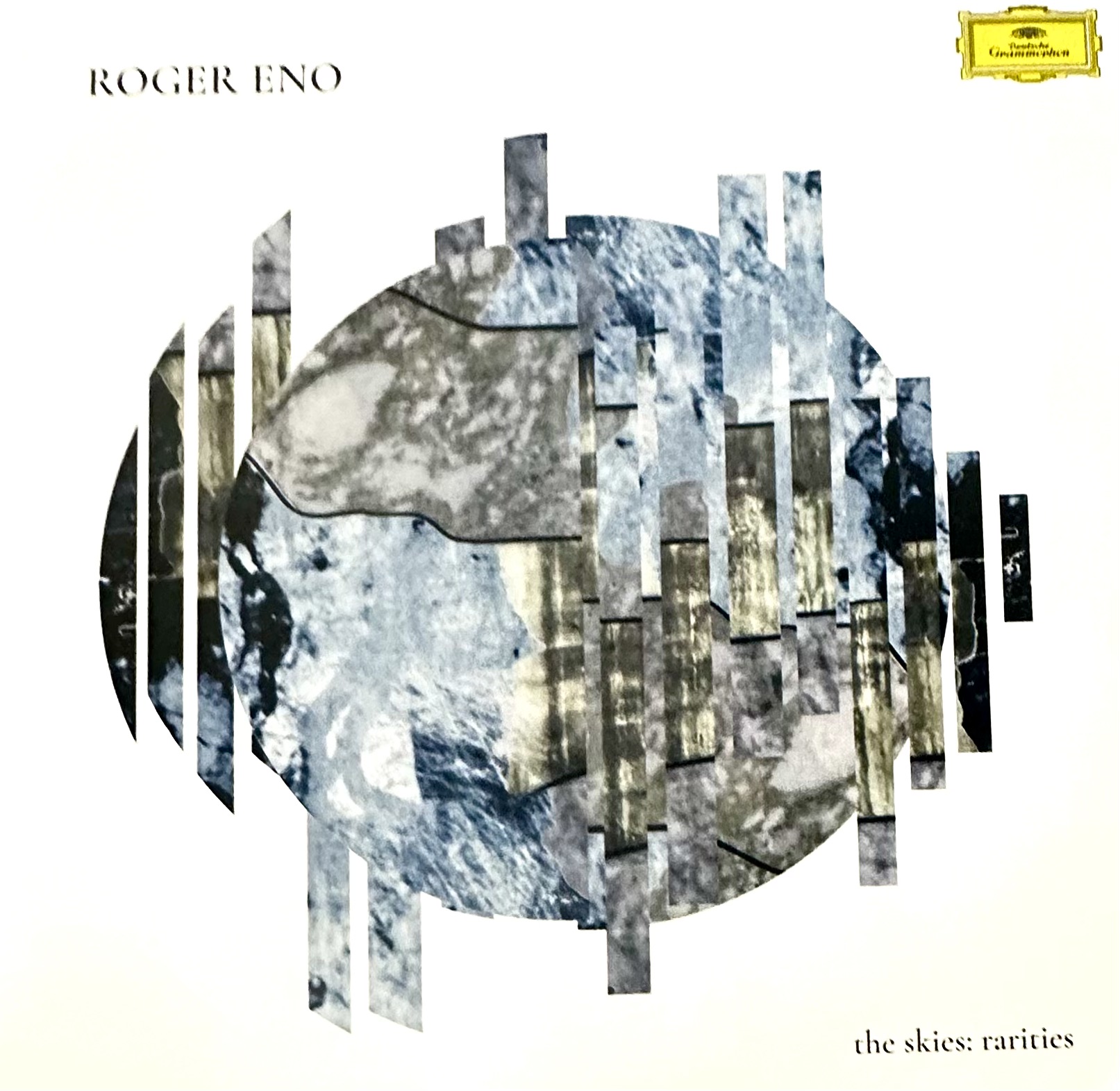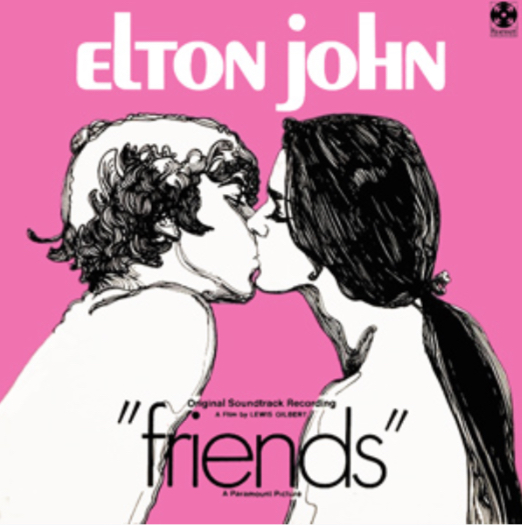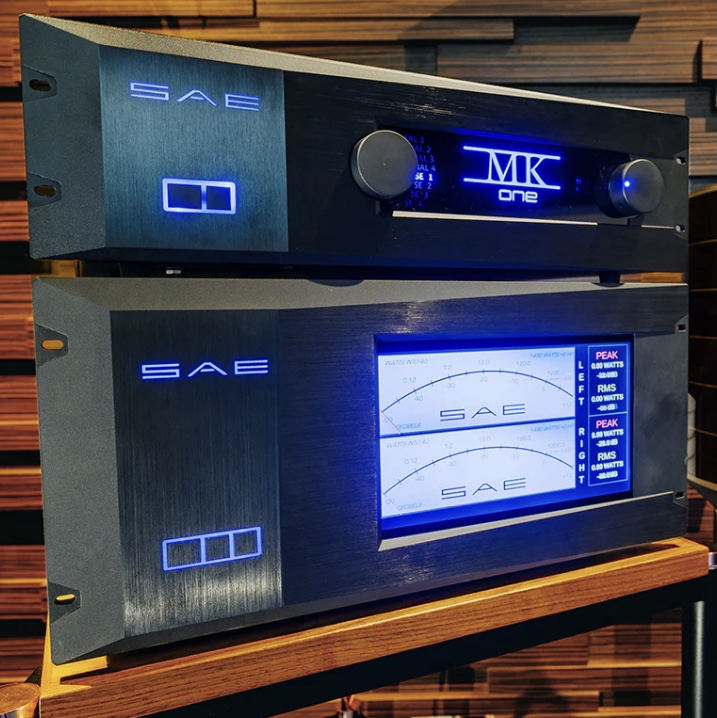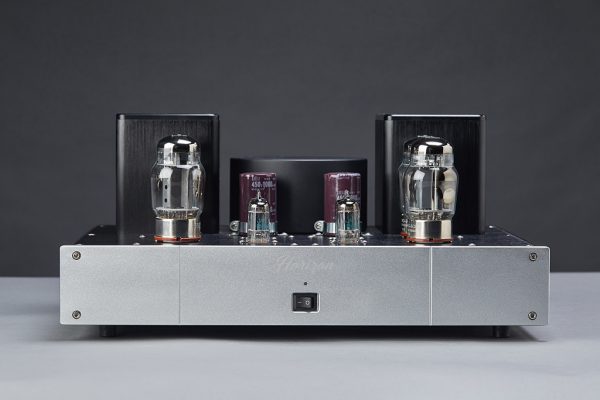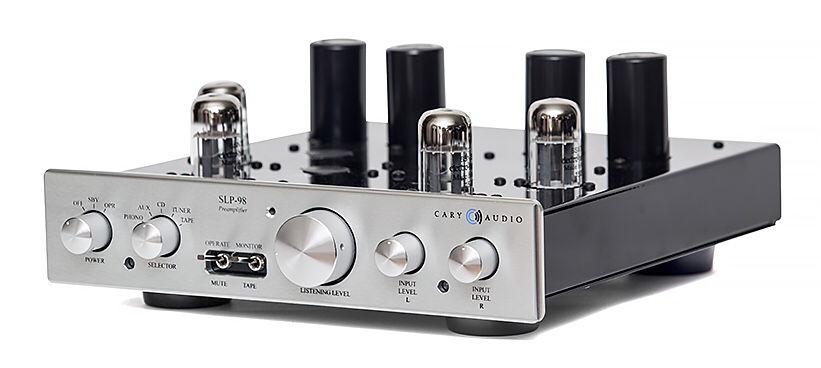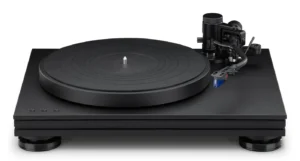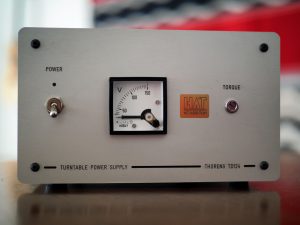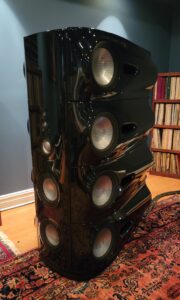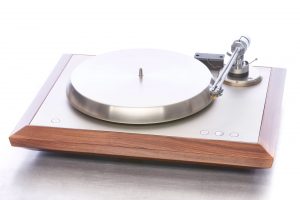"Something Old, Something New, Something Borrowed and Something Blue." Has anyone not heard that famous phrase before? If not then I have seriously dated myself and will move on. That being said though, all of that phrase is exactly what the TNJ Turntable is all about!
One of the never changing rules in this business / hobby is ongoing improvement and new technology that is focused on improving the delivery of music to the listener. Always, the goal is to render the old tech obsolete, and replace it with new and better. The way of the world distilled into the HiFi world.
Jean Nantais is a Canadian craftsman and audiophile, among a great many other things. He is a snowshoer extraordinaire, beer connoisseur, and all round backwoods man of legend. (Okay, I am not sure how far the legend goes, but he should be a legend far and wide). He also happens to make a very interesting turntable. Jean is the man who brought the Lencos out of the darkness (for many, they were considered the worst of the idler wheel drives due to the vertical wheel) and into the public domain, via his Audiogon thread Building high end tables cheap at Home Depot. The thread is claimed to have created the current craze in all idlers, and also opened the door to the resurgence of interest in direct drive (since it dared break the stranglehold belt-drive had on audiophiles at that time, earliest 2004). In that thread Jean taught the world how to realize the potential not only of Lencos, but also of all idler-wheel drives. You'll notice all his competitors (excepting Loricraft and SME) now use only high mass plinths of some sort or another (the lower the mass, the lesser the result). While he does not claim to have invented the concept of high mass, but he most certainly did popularize and develop it further.
Something Old
"The first component of my TNJ turntable experience starts with an older Lenco L75 turntable, first introduced to the public in 1967. It was introduced as a new upgraded turntable replacement for the Lenco L70 and L77 turntables. Made in both Switzerland and Italy, the Swiss production ended in 1979, and Italian production ended in 1982-1984. The Lenco is driven by an idler wheel with a rubber tire on the wheel connected to the motor, and turns the platter. They were largely replaced by belt drive turntables. The reason was that belt drive was supposed to be much quieter than any other drive, with the belt acting as a filter to defeat transmitted vibration, thus minimizing it. Lenco was far from being alone in using the idler wheel drive system. Rek-O-Cut, Garrard, Thorens, and EMT also used the drive system with varying degrees of success. (The Rek-O-Kut was notoriously noisy in stereo back in the day, but not in mono as the mono feed didn't recognize rumble.). Idler wheel drive systems were originally developed to overcome drag forces from the stylus. People still had 78s and many of those cartridges tracked at an unbelievable force by today's standards of 10 grams."
According to Jean and most experts on the idler wheel drive systems, "Stylus force drag is the braking action of the stylus in the groove: the greater the groove excursions, or pressure of the stylus, the greater the friction and so braking force. As expected, sudden transients, dynamic shadings, and bass are, apart from actual tracking force, the greatest causes of stylus force drag, which is always present, and it is here that failure to overcome it is most audible. These areas are precisely where idler-wheel drive's torque is most audible: in transient speed, dynamics macro and micro, and bass power, control, and hence bass detail. To those who are sensitive to these issues, due to its immunity to stylus force drag, idler-wheel drive also gives a better sense of timing and coherence.
"As I've written since the beginning in the Long Ago and Far Away (i.e. since my first attempt to start the Idler-Wheel Revolution), the reason the Lenco is such a sonically-amazing record player is not Magic Lenco Fairy Dust, as some seem to want to believe, but simple engineering: torque from the combination of a powerful motor married to an amazing flywheel-platter via a delicate idler wheel, and the resulting speed stability, a great resistance to the braking action of the stylus in the groove, friction, otherwise known as Stylus Force Drag.
"Now, I've rebuilt some 100+ Lencos (and others) over the years (remember I rebuilt quite a few in a variety of ways / styles / materials) and very often any problems that come up are due to that damned little spring. Usually the issue is a tired spring, meaning it has lost its force and so the Lenco's overall torque is severely compromised and, as demonstrated to and verified by Salvatore, leads to a serious loss of detail, SLAM, PRaT, dynamics, and so on (even imaging!). It can also lead to serious "wobbling" at higher speeds, like 45 rpm, where the wheel simply doesn't engage reliably.
"The fix to this was to snip off a few loops of the spring to make it tighter, but one had to be careful, because if the spring was shortened too much, then all sorts of weird noises and grindings and bindings would occur: the force of the spring needed was pretty exact: not enough, and a serious loss of performance, too much and various problems. Add in to this that it is very likely, after all these years, that ALL Lencos are performing sub-par due to tired springs (unless NOS). What I in fact did is eliminate the spring altogether, instead substituting a weight on a string (which neither stretches nor contracts), which is utterly dependable and unvarying thanks to gravity, so greatly improving speed stability."
Something New
As you can see from Jean's comments above he has made notable upgrades to the Lenco drive system. While the original system is old, the upgrades and engineered changes are very new. The torque control spring is a serious modification, and certainly performs exactly how Jean has described it. For a far more in depth look at what Jean has done, and how he got to this point, go to the website. He explains it from start to finish, and it is in his own words so that you begin to see the fanatical attention to the smallest detail that makes this OLD / NEW turntable exceptional. The way he went about it makes it a very entertaining read. His changes are proprietary and not exactly public info above what he speaks to on his site. Originally offered as sort of a DIY upgrade with instructions, his tables have gained enough of a following that they keep him busy full time creating them.
Something Borrowed
Well perhaps the inspiration he gathers from his working farm and accompanying wilderness are that he snowshoes most mornings provides the "borrowed" piece of the table. His stories of tracking wildlife, his appreciation for the beauty of nature certainly shows in the beauty of his higher level plinths.
Something Blue
Well that is the easy part of this equation. The blue Steampunk paint (what we have here) is not my preferred cup of tea, but that is simply a matter of paint. The SteamPunk finish is available in any combination of colors for the plinth, chassis, and silk screening. The original blueprints are silk screened onto textured chalk paint before being clear-coated, and the precise model, a 100 lbs Classic Lenco MKII, is also available in any combination of woods and/or color for the chassis! For more dollars he can craft a very sweet cabinet clothed in exotic veneers and quite glossy. These cabinets are true works of art.
When the table showed up, my FedEx driver hoisted it out of the back of his truck and carried it about 25 feet into my garage, and set it down on the floor. Off he went and I stooped down to pick it up and carry it into my audio room. Let me just say that whoever coined the term "Golden Years" to refer to our senior years was an idiot. Suffice it to say the box didn't budge but my spine certainly did. Shipping weight was 128 lbs, with 8 lbs being the box and packaging. The rest is pure turntable. So once Paula came home, she helped me remove it from the box and set it up on my dedicated turntable stand. The top of the stand is roughly 48" tall. Do not try this alone unless you are a 25-30 year old gym rat, as is my Fedex driver. (Have to say I miss being 30 and able to bench press 250! Those days are now 30 years behind me.)
According to Jean "Mass is Class." I tend to agree with him. The connection is this: the heavier the plinth, the lower the noise floor, simple as that. Since wood is the best material (it neither reflects vibration / rings, nor goes too far in the other direction absorbing and killing off energy, and so damping dynamics and losing information), then to reach the target weight of 100 lbs (beyond which practicalities become problematic), we end up with the dimensions of his plinths (which you'll see several other businesses have followed).
Jean's plinths are furthermore not simple stacked birch-ply (which doesn't sound particularly good) nor pure MDF (which sounds quite bad), but instead an interleaved mix of the two plus other wood materials, arranged in a very particular way, glued using a glue chosen for maximum effectiveness, which ends up sounding superb, with excellent timing and coherence. A great part of his work, not only on the plinth and tonearm board but also on the chassis, bearing, and various parts, is the sound of materials. It seems in the rush to embrace this and that material for stiffness, mass, hardness and etc., that the sound of materials, which has nothing to do with the aforementioned list, is forgotten.
To maximize the effectiveness of all this mass, Jean uses Direct Coupling, which is the fastening of the chassis to the plinth, not by bolting it (which is just a form of clamping), but instead by driving several screws through the chassis and into the very meat of the plinth, which drains all noise directly into the plinth, rather than depend on simple pressure (i.e. bolts / clamping) and immobilizing it with simple weight. Each screw, rather lengthy, is intimately mated to the wooden plinth (just try to unscrew one screw by hand), and each screw, if flattened out, represents an important surface area. If you take a look under the platter you will see this arrangement, with many screws, and so a lot of marriage of chassis / motor to the plinth, which literally "eats" and the noise "disappears."
Once unboxed, there is really very little that the new owner has to do. Release the counter weight underneath the turntable, level the table, plop the rather heavy platter on it, and set up your tonearm. The review unit came with the Jelco TK-950L tonearm. The Jelco is a 12" unit with removable headshell. Jean will provide arm boards for just about any tonearm. The one thing I rediscovered is that with replaceable head shells you can queue up a couple with nice head shells and cartridges, and it makes it rather easy to change them out when reviewing. He can also configure the turntable to have two or three mounting boards if you want a single table with multiple arms. I don't think there is much he cannot offer in the way of customization with plinth finish materials, colors, multiple mounts, etc.
As I stated, the Steampunk finish would not be my first choice, but that being said it has grown on me a bit, and I can say it has no bearing on the performance of the table. It is rather interesting to have the exact factory schematic printed right on the exterior of the table. A fun little touch. I am more than a bit fond of the wood finishes he creates.
So this brings us to what your money gets you, besides a hernia or a herniated disc while unpacking and setting up, in terms of sound reproduction. Well sometimes it is much easier to say what you do not get when it comes to the sound of a turntable. The truth is I do not want to hear anything from a turntable. It has a simple chore to accomplish. Turn the platter at a stable speed and without any discernible noise at all. That is it in a nutshell. Stable and noiseless! Does that TJN do either of those things? You bet it does. So it is what the table does not do that becomes the most important aspect of any turntable as far as I am concerned. Whenever I have a turntable to review, I set the speed and check it constantly to see if there is any deviation from the initial strobing to the end of its visit. One of the great things I loved about the Consonance Droptlet table is that in all the years I have I extensively used it, the speed never varies from dead on. The TJN performs the exact same way. It's entire time here the speed was a constant as anything I have ever seen from a belt drive or direct drive in the day. A quartz locked direct drive generally will hold its speed with exceptional accuracy, and that was always the selling point. It came at a cost of some drive noise though, and that was the main reason they fell out of favor. I stayed away from idler heel drives because of the same issues in the past. As I lived with the JNT table I took the stethoscope to the table repeatedly looking for tell tale signs of vibration and noise from the wheel at any point in the table, and especially right next to the platter as it was in operation.The only noise that I could discern was from the stethoscope moving, or my finger moving on it. Absolutely nothing emanated from the table. I can usually detect some motor noise, no matter how faint. Very few tables have passed with zero noise at all.
So in review, thus far we have a turntable with brutally accurate speed. Dead silence from the mechanicals. An inert beast of a plinth that rejects all vibrations from surrounding sources, and an easy, if rather heavy and bulky to set up initially, turntable that is as solid as it gets, especially in this price range. That is all you can ask of a turntable, and that is exactly what you get from Jean when you acquire one of his turntables.
When listening to some of my favorite albums I noticed most importantly that everything came from an incredibly dark background. Somewhat like the splashing of neon colors of paint, á la Jackson Pollack, on a black sheet would cause the colors to pop with an incredibly vivid explosion (as opposed to the same effect on a white sheet), everything in the musical palette exploded out of this incredibly black background. The last turntable I reviewed that did this on this level was the Montigero Lusso a number of years ago. That table cost $75,000. Was it worth $75,000? Yes it was for so many reasons, but the TJN Lenco Idler Wheel table in my possession matched this aspect of the Lusso's performance at about $68,000 less in cost. How can you not love that?
I ran through a lot of new and old vinyl doing this review. One thing became rather clear to me the longer I listened. This turntable will not be leaving my system. Buying a piece of gear that you have reviewed has to be the greatest compliment you can give. We hear so many items, many of them are desirable, and often I would like to keep that piece, but you cannot buy everything you take a fancy to. At least I cannot do that. To lay out the cash to buy any piece it must seriously out flank current items in the system. The TJN easily does this, and will now be my reference piece. I am even growing to accept the Steampunk paint more and more. Regardless, this table is one of the best I have experienced.
On the recording of Eva Cassidy's (regular readers of my reviews will be familiar with this as it I always a go to) "Somewhere Over the Rainbow" from the album Songbird (S&P Records S&P-501), I noticed something that I had not spotted before. I actually noticed a stronger presence of the sound of the flesh of her fingers picking the notes. It is the subtle change in attack of the strings that comes with finger-picking. It is subtle, but when you are familiar with the textural change as a player it pops out at you when the recording is this good, and the background is gone. Such is the case with this turntable. It is important to note that I was using my same go to cartridge for the entirety of the review, and that is the Koetsu Urushi Vermillion supplemented towards the end with the Paradox Pulse cartridge previously reviewed. The only real change in the system during this time was the turntable and nothing else. The sibilants in her vocals were a bit more defined and present. No muddying of anything. Crystal clear and upfront. It is a sparse recording so these things, in and of themselves, are usually more noticeable with a recording that has a sparse arrangement, and only a couple of instruments. After listening to this track literally hundreds of times I can credit the added information to the turntable's ability to remove everything else from the background. The clarity was astonishing.
On the Hiroshima instrumental track "One Wish" from the album Another Place (Epic Stereo BFE39938), the plucking of the Koto by June Kumamoto was definitely a bit sharper, and seemed more isolated among the rest of the instruments playing on the TJN turntable. This is another track I have heard so many times, both on this recording and the 7 times my wife and I have seen them in concert. This is one of my favorite tracks of theirs. It is followed on the album by "Save Yourself For Me" with lead vocals performed by Barbara Long. Another favorite. As a matter of record, Hiroshima music with Barbara singing is wonderful, and this time was no different. It seemed a bit fuller, and the power of her voice was a bit amped up in comparison to other sessions. Just a bit more forward and isolated in the center. Closing my eyes, I could see Barbara standing front and center, and could almost feel the breath of her vocals. It was almost as if I had grabbed a better mastered copy of the album. Danny Yamamoto's drums were delivered with a bit more impact and clarity, especially in the kick drum. A pattern was starting to emerge, and that was the albums were sounding fresher and more alive to me when played on the TJN! If I had just come off reviewing an entry level turntable and arm combo I might have chalked it up to just the difference between $2500 of turntable, arm and cartridge, but that was not the case. I did an extensive listening to my Consonance with a 12" carbon straight tonearm and the Koetsu. I have never had an issue with this turntable at all, but the move to the TJN from this setup might as well have been as big in terms of the overall improvement of the delivery of the music. Perhaps part of this was due to a heavy metal platter, and not an acrylic one, resulting in a more lively delivery. For anyone who is a hard core cyclist like I am it may be the exact same effect that goes with changing from a steel frame bike to a carbon fiber one. The carbon initially feels dead and lifeless compared to the steel. That's why the say, "Steel is real!" I have been riding carbon and titanium for 25 years now, but am building a steel bike to once again enjoy that liveliness. It may be that the steel platter is the key here for the "alive" sound, but the rest of it is in the drive, the massive plinth, and the magic that Jean infuses into his work. (Unrelated to the gear I have a request of Hiroshima... bring back Barbara!)
On Nat "King" Cole's "Stardust" from the album Love Is The Thing (Del Ray Records 180 gram recording DR10021) the King's voice is just sublime in the delivery, and the nuance in phrasing was just captivating. His vocals, set against a swirling orchestra behind him, just elevated the song in a way few ever could, and on the TJN turntable it was all that much better. This song is a classic and the only other recording of it that I have had connect with me in the way this one does is Willy Nelson's version. This version is more fully supported instrumentally, and was arranged and orchestrated by Gordon Jenkins. It is that arrangement of the orchestra that caught my attention more than in the past. It just seemed to breathe more noticeably. It is something that is always so hard to put into words, but the bottom line is that my enjoyment of these particular tracks was enhanced and made more enjoyable as it seemed the music just roast out of the black background, and brought detail that I had not noticed before.
The last cut I will delve into is a far right turn from Nat to Stevie Ray Vaughn's "Tin Pan Alley" from Couldn't Stand The Weather (Epic Stereo FE39304). This is a song that if you attended any audio show on the planet, you will most likely, if not be absolutely assured of hearing this track coming out of half a dozen rooms at a minimum. The reason is that it is a brilliant recording, and fully captures what the blues truly represent. Story telling of rough times, infidelity, being down on your luck, and all other things that challenge us in life. This particular track is one very stark track. Stevie's guitar, Chris Layton on drums, and Tommy Shannon on bass. With this trio you really don't need anything else. Stevie had a unique approach. Fat guitar strings, tuned a step down and sans much in the way of effects. Stevie simply relied on his Strat and a Marshal amp for most of the tone. This is blues that is as pure as it gets. The emotion and despair of the song comes through with such honesty, and on the TJN it was brutally honest. The guitar just sang so sweetly. Tommy's bass underscored the guitar work beautifully, and Chris' drums were just perfect. The drumstick hitting the rim of the snare made a very deliberate snap that had incredible decay. The toms that roll when its time for the .44 cal to shoot made me come out of my chair, the impact was so full. I actually could feel the air slide past me in my chair. Stevie's hammer ons had this delightful feeling of a fatness of tone, and just floated in the air. I listened to the track three times in a row to make sure I was actually hearing, and not imagining, the incredible elevation of the detail. So real was the song that I have no desire whatsoever to travel to Tin Pan Alley. Been there, done that, and this is as close as I care to get ever again and with the delivery so much sharper it is still too close.
No matter what I played on the TJN MKII it just presented itself with more life, snap, and detail than any table I have had anywhere near the price since I have been reviewing over the last twenty years. This turntable is a must audition if you can swing the price and are looking for a turntable to last a lifetime and never find it disappointing.
As stated above "sudden transients, dynamic shadings, and bass are, apart from actual tracking force, the greatest causes of stylus force drag, which is always present, and it is here that failure to overcome it is most audible. These areas are precisely where idler-wheel drive's torque is most audible: in transient speed, dynamics macro and micro, and bass power, control, and hence bass detail" all were much improved over others tables I have reviewed and listened to. The improvement is beyond words.
So here is the price breakdown of the turntable, (contact Jean for variations and options): all Steampunk Classic Lenco MKIIs, with special painted footers, will have a base price of $5100 (as an alternative to his usual two-wood exterior plinth); if a heavy-platter Lenco is shipped to me I will give $500 credit. So, $5100 base price, plus $350 for the optional wheel, plus $250 for the mat, totaling $5700.
Below the Classic Lenco MKII is the Classic Lenco (Plain & Simple), at a base price of $2600, provided a Lenco is found and shipped to me. This is paperback veneer; add $400 for a Steampunk finish with matching footers.
Above the review turntable is the $8750 Reference Lenco MKII; the $10250 Reference Lenco MKIII; and finally the $17,000 Ultimate Lenco.
As I said earlier, this is my new reference table and I do not see myself ever changing that. I cannot offer any higher praise than that. Thanks Jean for providing me a paradigm shift at this stage of my audiophile Journey!
PART 2 Nasotec Swing Headshell
So here is something less familiar to readers; the Nasotec Swing Headshell. While not quite enough for a full review, I am including this short review along with the turntable for efficiency.
The brainchild of Dong Chan Son, a Korean inventor of unique vision. According to the designer the reason for the swivel headshell is to eliminate many of the short comings of a full fixed stylus tracking a curving arc. The claimed results for this are the following:
1. The swivel ensures the stylus maintains equal pressure on both groove walls.
2. Reduces or eliminates tracking error angle, tonearm resonance, groove damage, cantilever bending, and stylus abrasion.
3. Reduces crosstalk.
4. More dynamic and higher resolution.
5. Improvement in inner groove sound.
6. Life extension of stylus.
"As with most conventional tonearm & headshell combinations, the best we can hope for is to perfectly align the null points according to the alignment gauge we are using. So at these points our cartridge is tracking perfectly with the grooves, but the rest of the record playing area is basically a compromise getting close as possible as we can. The Nasotec Swing Headshell will correct this problem by gently moving with the grooves, creating perfect alignment."
So how about this little guy? I was truly intrigued when the headshell showed up at the same time as the turntable. I opened the box and was immediately taken by the fit and finish. I was also quite pleased when I mounted it the TJN turntable. It actually turned the turntable into an American Flag statement with the whole shebang being red, white, and blue. For a patriotic American that was just a cool little addition. Of course this has absolutely nothing to do with performance just an odd little note.
When the headshell showed up I decided to wait till I was close to the end of my review time with the TJN turntable so that I was truly familiar with the sound of the table and the Jelco 12" arm that I am using. If you do not have a tonearm with a standard removable headshell there is not way to use the Swivel Headshell. That being said, if you have a tonearm that can handle the headshell it is something I would absolutely recommend that you investigate. It was just a change to the rigidity that we normally apply to tonearms and headshell that the concept was a bit alien in nature but nothing ventured nothing gained as it were.
When I mounted the Swivel Headshell I went through a system of listening tests to determine what, if any, impact this headshell would have on the sound. Before mounting I listened to 11 tracks with the original detachable headshell in place, and then the exact same tracks immediately after with the Nasotec Swivel Headshell in place. No other changes.
After the increase in detail that the TJN MKII provided I did not have high expectations of the headshell making any noticeable audible improvement. The change was not to the degree the turntable provided, but it was a definitive improvement, and one well worth the modest cost of the headshell. When I think of the amount of money we all invest in the pursuit of more focus, more detail and more information from our turntables (think of tonearm cables upwards of $500 and more), this headshell turned out provide all of those things. I noticed slight differences in things like hardcore bass passages created less stress to the tracking. Heart's "Mistral Wind" from the Dog and Butterfly album (Portrait FR3555) has some incredible bass thanks to the ever dependable organ bass pedal. This track can ruffle some tonearms. No such danger with the Nasotec. The passage was as smooth as butter. It tracked though the test records with absolute composure and tracking finesse. The track "Never In My Life" by Mountain from the album Climbing is one of those bass and drum heavy tracks that never lets up from start to finish, and can create a tsunami of vibration when played to concert levels. I like to pull it out every now and then to judge bass response, transient attack, and tracking. The Nasotec just stayed right on top of the music. It also seemed to improve the upper registers in this song that tends to get overrun by the bass and drum energy. Never noticed that before, and I credit the Swing Headshell for pulling that out of the recording.
I also put it through the paces of the Analogue Recordings Ultimate Analogue Test LP. With the Nasotec the performance was the best I had ever experienced. Nothing on the record phased it at all. With something like Nasotec Swing Headshell that may be the absolute best indicator that this headshell is no form of snake oil, but rather a very measurable improvement.
In short the Nasotec Swing Headshell is a another must audition item and I have purchased mine!
MKII turntable with Steampunk finish
Retail: $5700
Nasotec Swivel Headshell
Retail: $360
TNJ Turntables
Integrity HIFI (Nasotec Swing Headshell)
https://www.integrityhifi.ca/nasotec
519.204.0195




